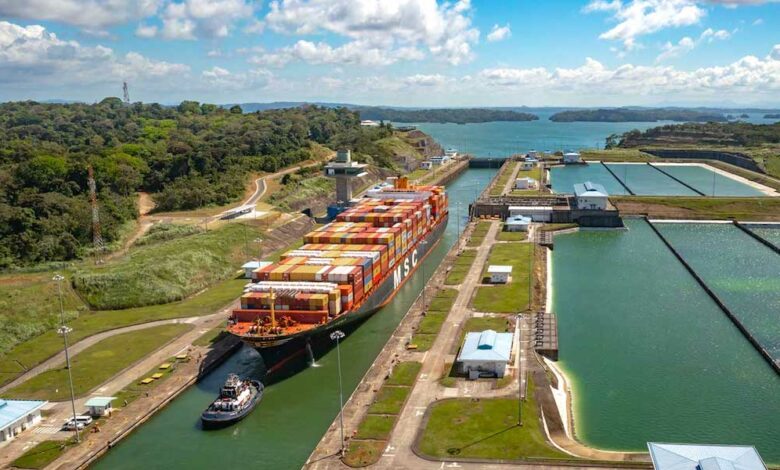Panama Canal Authority warns restrictions will stay in place for at least 10 months

Global shipping bodies have been urged to come together to share transit plans at one of the world’s key maritime chokepoints with officials at the Panama Canal Authority warning yesterday that water-conserving measures will be in place for at least the next 10 months.
Faced with an unprecedented drought this year, combined with the onset of the El Niño weather phenomenon, administrators at the Panama Canal have cut the draft restrictions for ships transiting its larger neopanamax locks by 2 m as well as slashing the volume of daily transits by 20% to just 32 vessels a day. These measures have seen ships backing up in significant numbers at either end of the canal. Today’s official total count is 129 ships, down from the peak of 165 earlier this month, but still 43% higher than the average.
The canal’s deputy administrator, Ilya Espino, told Reuters yesterday the restrictions would remain in place for at least the next 10 months, as such throughout the first half of next year.
Container services and cruise itineraries tend to transit the canal with long advanced bookings. For bulk sectors, it is more ad hoc and with shorter notice, and it is has been here that the impact has been greater this month, where it might not be possible to obtain an advanced booking and therefore joining the queue is necessary.
For containerships, for the largest ships which will likely continue to have draft restrictions that means that around 2,500 teu of space cannot be utilised and therefore a maximum headhaul utilisation of 84%. For those 12,000 teu+ ships, re-routing via Suez would be one option that many liners will now be looking at given the official line from Panama that the restrictions are here to stay.
For smaller containerships, which can still pass fully laden, a backhaul return to Asia via the Suez or the Cape with a slightly longer distance and time is another option liners will be looking at to reduce overall Panama demand while also soaking up capacity at a time where container fortunes are widely perceived to be on the wane through to at least the end of next year.
There has already been one cruiseship which has cancelled its winter Panama season. Container carriers switching routes will be watched carefully by other sectors keen to get prized slots through the waterway in the coming months.
“Maybe the bulk and container segments such as the World Shipping Council, INTERTANKO, INTERCARGO and BIMCO along with the Panama Canal Authority can come together to strategically plan how to best use the limited resources in the short and medium term. Such cross-industry coordination and collaboration, I think would be a first,” suggested Andy Lane, a partner at shipping advisory CTI Consultancy.
The travails at the canal are not having a notable lifting effect on container spot rates in the past fortnight. Drewry’s weekly World Container Index, published yesterday, showed rates from Shanghai to New York were down by $120 per feu.
Nevertheless, this could change soon, argued Niels Rasmussen, chief shipping analyst at BIMCO, in conversation with Splash today.
“The longer the situation persists the bigger the chances are of further freight rate increases and the likelihood that shippers will begin to divert cargo back to the US west coast ports and use rail to bring the cargo to its final destination,” Rasmussen said, stressing that the predicament in Central America was unlikely to impact global supply chains as the container trade is expected to continue to suffer from excess ship capacity.
“Carriers most act, and shippers too. But it’s a fight for space with a fully utilised canal right now, and more volumes on the way in Q3 and into Q4,” warned Peter Sand, chief analyst at Xeneta, a freight rate platform.
